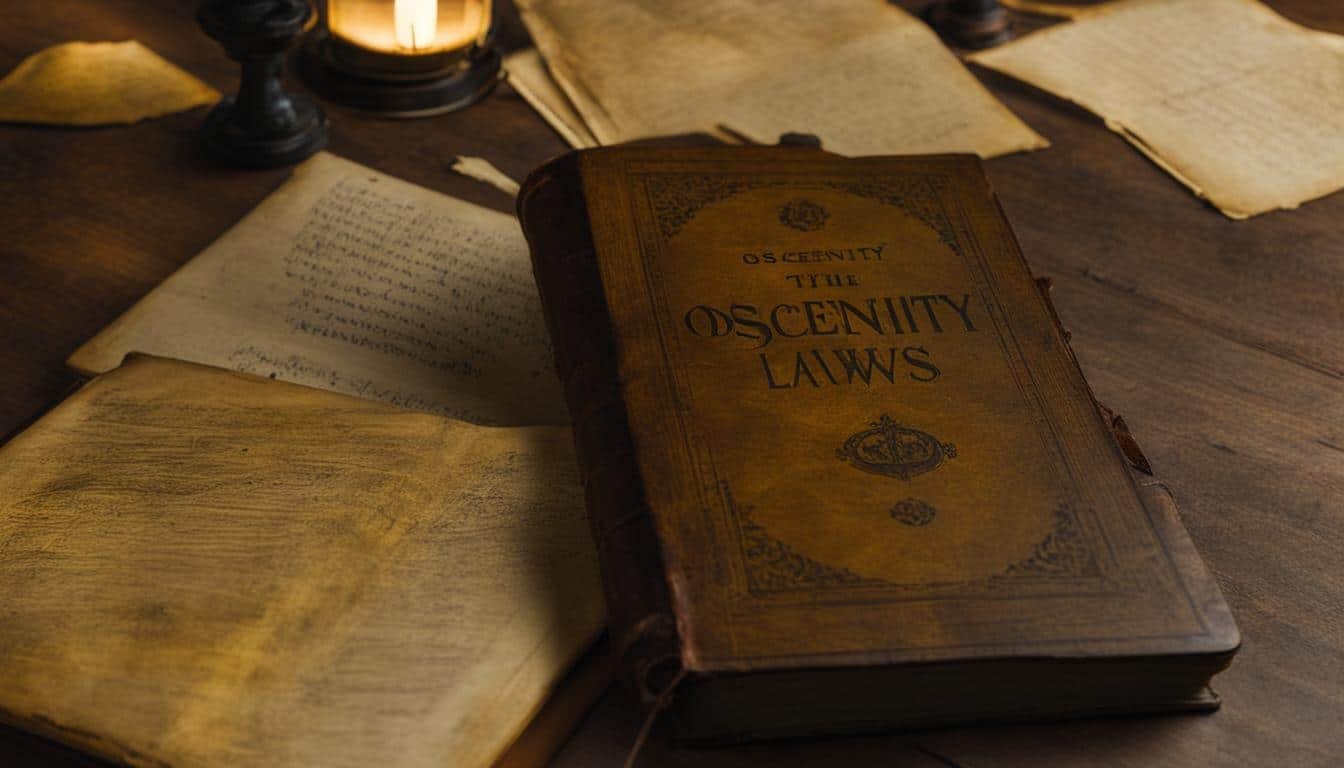The evolution of obscenity laws in the United States has had a profound impact on shaping societal norms. Over time, these laws have undergone significant transformations, reflecting changing attitudes towards explicit content and artistic expression.
Key Takeaways:
- Obscenity laws in the United States have evolved extensively, reflecting societal changes.
- Stephen Gillers’ research provides valuable insights into the transformation of American obscenity law.
- The shift from the Hicklin standard to the Ulysses II case marked a pivotal moment in obscenity law.
- The Ulysses II case had far-reaching consequences for the publication and distribution of James Joyce’s Ulysses.
- Contemporary trends in obscenity laws continue to adapt to the challenges of the digital era.
The Impact of Ulysses and the Ulysses II Case
The publication of James Joyce’s Ulysses played a pivotal role in the transformation of American obscenity law. In 1920-21, Margaret Anderson and Jane Heap, the editors of The Little Review, faced prosecution for publishing an excerpt from Ulysses. Despite arguments that Ulysses should be considered a work of art, the court convicted Anderson and Heap on charges of obscenity.
“The publication of Ulysses in The Little Review is a case of words used brilliantly with obviously obscene intent. No other work can approach it for sheer dirtiness. It is the work of a disordered mind.”
These convictions had far-reaching consequences for the publication of Ulysses in the United States, as publishers and distributors feared similar legal repercussions. It wasn’t until Morris Ernst’s successful legal strategy in the Ulysses II case that Random House gained confidence in publishing Ulysses without the fear of prosecution. The Ulysses II case marked a turning point in the evolution of American obscenity law, challenging traditional notions of obscenity and paving the way for greater artistic freedom of expression.
The Little Review Case
The case against Margaret Anderson and Jane Heap, commonly known as the Ulysses or The Little Review case, symbolizes the clash between artistic expression and societal norms. The court’s conviction of obscenity reflected the prevailing conservative attitudes of the time, which sought to censor and restrict forms of artistic expression that deviated from established moral standards.
| No. | Year | Incident | Outcome |
|---|---|---|---|
| 1 | 1920 | The Little Review publishes an excerpt from Ulysses | Prosecution of Margaret Anderson and Jane Heap |
| 2 | 1921 | Anderson and Heap convicted of obscenity | Legal impact on the publication of Ulysses |
| 3 | 1933 | Random House successfully publishes Ulysses after the Ulysses II case | Increased artistic freedom of expression |
The Ulysses II case marked a turning point in the interpretation and enforcement of obscenity laws, highlighting the need for a more nuanced consideration of artistic merit. The impact of this case reverberates to this day, as it set a precedent for protecting and promoting freedom of expression in literature and the arts.
Contemporary Trends in Obscenity Laws
In the digital era, the landscape of obscenity laws has continued to evolve, reflecting the shifting culture and media environment. While traditional offences under the Obscene Publications Act 1959 have declined in significance, new offences have emerged to address the challenges posed by the digital age.
Statistics reveal that obscenity-related offences have not decreased, but rather increased in number. Specifically, offences related to indecent images of children and the display of indecent matter have become more prevalent in recent years. This troubling trend necessitates a critical analysis of contemporary obscenity laws.
The introduction of new legislation and the adaptability of existing laws highlight the importance of understanding the impact of obscenity laws on freedom of expression and the autonomy of individuals. As our culture and media continue to evolve, it is crucial to assess whether these laws strike the right balance between safeguarding societal values and preserving individual rights.
Source Links
- https://papers.ssrn.com/sol3/papers.cfm?abstract_id=1094069
- https://openscholarship.wustl.edu/cgi/viewcontent.cgi?article=1147&context=law_lawreview
- https://ora.ox.ac.uk/objects/uuid:e2ae70d8-12bc-4506-99b8-9538a243dcb4/files/ma70f1217b5c78054a43ae1fa31390a2a






